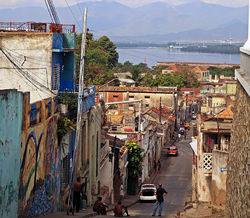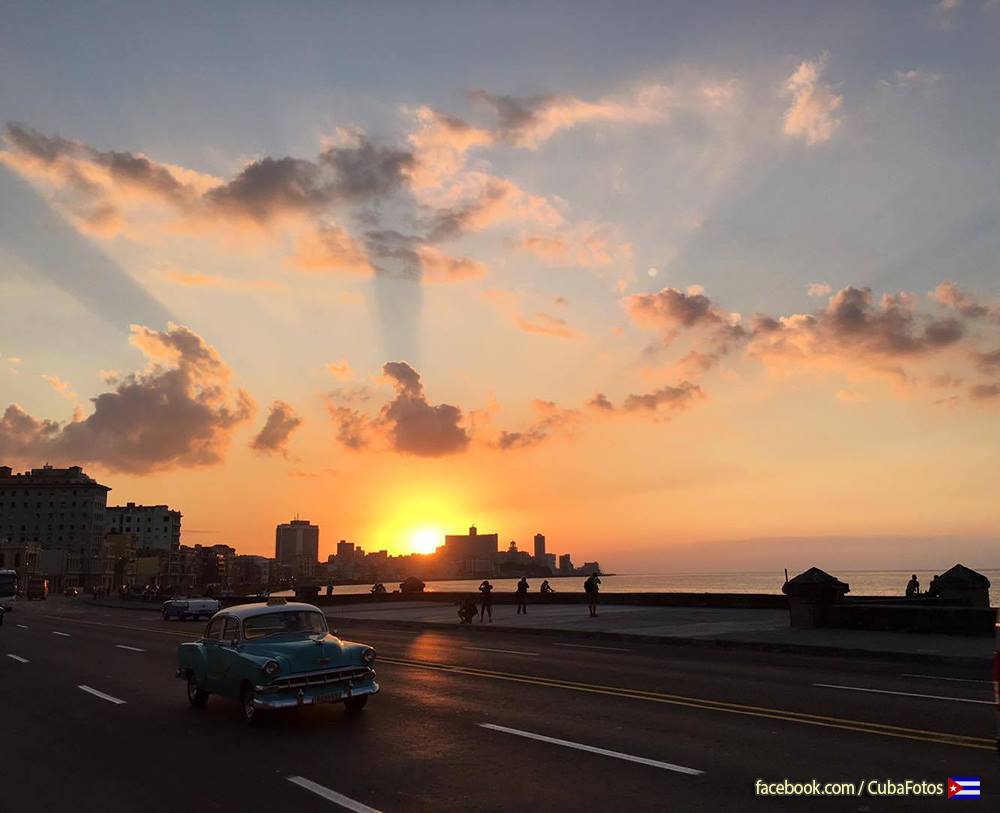NEW MASONIC LODGE WAS CONSTITUTED IN CUBA.
The Masonic lodge Los Maceo will be consecrated on coming June 14 in the city of Santiago de Cuba, in honor of the venerable family of Cuban patriots of the 19th century.
The Act of consecration is going to perform at the temple that belongs to the respectable and Meritissimo lodge L’Oasis.
The date chosen for the offering of the new Masonic organisation, will coincide with the of the birth of Antonio of the Caridad Maceo Grajales, the bronze Titan, June 14 but in 1845, at the time known as Providence Street, in this town.
Two executives of the Masonic lodge Los Maceo: Adolfo Armando Bermúdez Jacas, Worshipful Master (President), and Mario Kindelán Baró, speaker, recalled that the Cuban Freemasonry began by Santiago de Cuba.
“The preceding argument is corroborated in research of Dr. Eduardo Torres-Cuevas, who found the first reference on the subject in the book history of Freemasonry”, German historian Joseph Gabriel Findel, between 1751 and 1754.
He mentions to the Grand Lodge of England, the subsequent English occupation of Havana, but he says that that Freemasonry did not establish institutions in Cuba.
Point, that after the revolution in Haiti at the end of the eighteenth century and early nineteenth, many French residents in Hispaniola, move to Cuba and with them came the first masonic lodges that operated in the largest of the Antilles. And he adds:
“These workshops were the Perseverance, La Concorde, L’ Amitié and La Concorde Benefique. The establishment of these can be specified in the year 1798. The first two were established in Santiago de Cuba, and the last two in the city of La Habana.”
Between 1830 and 1857 there was in Cuba no established regular or irregular masonic body.
He says that in 1862, the Cuban Freemasonry was divided to create a new institution, the Grand East of Cuba and the Antilles (GOCA); originally it had a character essentially patriotic, ethical, and social reform, where was the Cuban revolution of October 1868.
Its creator was the doctor and distinguished intellectual Vicente Antonio de Castro and Bermudez, and belonging to the GOCA; the Cuban patriots that own 10 October, start of the war of independence, the GOCA was dissolved in Havana, while in Santiago de Cuba volunteers Spanish, non-conforming, on 13, 14 and 15 February 1870 murdered to José Andrés bridge Badell, Grand Master of the lodge of Columbus; Esteban Miniet, Grand Treasurer, and other prominent personalities.
“Despite the difficult circumstances that Freemasonry was going through during the first war of Cuban independence (1868-1878), began a restoration process.”
Freedom Lodge, in the Avenida Victoriano Garzón, is enshrined in 1932 and is now set to cast sleep the Los Maceos Masonic Lodge, activity which will be attended by “Masonic brothers” throughout Cuba, led by the very respectable Grand Master of the Grand Lodge of Cuba to the and AM, located in Carlos III and Belascoain, in Havana.
A summary of the arguments of the own Grand Lodge of Cuba to the AM, the network of networks, adds, moreover, that Freemasonry is not a political organization; nor is it a religious sect; Masons meet and work regularly; that is undeniable social influence that has had this fraternal Association in modern history; in Cuba masonry also has an illustrious past, inextricably linked to the same formation of nationality and that their ranks fought men who then fought for the independence of the country…
“Article 1, subparagraph I of the Cuban Masonic Constitution declares that”Freemasonry is the organic institution of morality”, morality, understood as respect for himself and the society in which sits, and this criterion represents aspiration to a lifestyle whereby masons, not only within the fraternity should be distinguished , but also in any location.
Agencies / Miguel A. Gainza Chacón/InternetPhotos/Arnoldo Varona/TheCubanHistory.com
THE CUBAN HISTORY, HOLLYWOOD.
NUEVA LOGIA MASÓNICA SE CONSTITUYE EN CUBA.
La Logia Masónica Los Maceo será consagrada el venidero 14 de junio en Santiago de Cuba, en honor a la venerable familia de patriotas cubanos del siglo XIX.
El acto de consagración se va a efectuar en el Templo que pertenece a la Respetable y Meritisima Logia L’Oasis.
La fecha escogida para la ofrenda de la nueva organización masónica, coincidirá con la del natalicio de Antonio de la Caridad Maceo Grajales, el Titán de Bronce, el 14 de junio pero de 1845, en la entonces conocida como calle Providencia, en esta ciudad.
Dos directivos de la Logia Masónica Los Maceo: Adolfo Armando Bermúdez Jacas, Venerable Maestro (presidente), y Mario Kindelán Baró, orador, recordaron que la masonería cubana comenzó por Santiago de Cuba.
El argumento precedente es corroborado en investigaciones del Dr. Eduardo Torres-Cuevas, quien encuentra la primera referencia sobre el tema en el libro Historia de la Francmasonería”, del historiador alemán Joseph Gabriel Findel, entre 1751 y 1754.
Menciona a la Gran Logia de Inglaterra, la posterior ocupación inglesa de La Habana, pero asegura que esa masonería no llegó a fundar instituciones en Cuba.
Apunta, que luego de la Revolución en Haití a finales del siglo XVIII y principios del XIX, numerosos franceses residentes en La Española, se trasladan a Cuba y con ellos llegaron las primeras logias masónicas que funcionaron en la mayor de la Antillas. Y agrega:
“Estos talleres fueron La Persévérance, La Concorde, L’Amitié y La Bénefique Concorde. El establecimiento de estos puede precisarse en el año 1798. Las dos primeras se establecieron en Santiago de Cuba y las dos últimas en la ciudad de La Habana.”
Entre 1830 y 1857 no hubo en Cuba ningún cuerpo masónico regular o irregular establecido.
Dice que en 1862, la masonería cubana quedó dividida al crearse una nueva institución, el Gran Oriente de Cuba y las Antillas (GOCA); que en su origen tuvo un carácter esencialmente patriótico, ético y de reforma social, donde se gestó la Revolución Cubana de octubre de 1868.
Su creador fue el médico y distinguido intelectual Vicente Antonio de Castro y Bermúdez, y que los patriotas cubanos pertenecían al GOCA; que el propio 10 de octubre, inicio de la Guerra de Independencia, el GOCA fue disuelto en La Habana, mientras en Santiago de Cuba los voluntarios españoles, no conformes, los días 13, 14 y 15 de febrero de 1870 asesinaron a José Andrés Puente Badell, Gran Maestro de la Logia de Colón; Esteban Miniet, Gran Tesorero, y a otras prominentes personalidades.
“A pesar de las difíciles circunstancias por las que atravesaba la masonería durante la primera guerra de independencia cubana (1868-1878), se inició un proceso de restauración.”
En 1932 se consagra la Logia Libertad, en la Avenida Victoriano Garzón, y ahora, se establecerá en el reparto Sueño la Logia Masónica Los Maceos, actividad a la que asistirán “hermanos masónicos” de toda Cuba, encabezados por el Muy Respetable Gran Maestro de la Gran Logia de Cuba AL y AM, ubicada en Carlos III y Belascoaín, en La Habana.
Un extracto de los argumentos de la propia Gran Logia de Cuba AL y AM, en la red de redes, añade, además, que la masonería no es una organización política; tampoco es una secta religiosa; que los masones se reúnen y trabajan regularmente; que es innegable la influencia social que ha tenido esta asociación fraternal en la historia moderna; que en Cuba la masonería también cuenta con un pasado ilustre, indisolublemente ligado a la formación misma de la nacionalidad y que en sus filas militaron los hombres que luego lucharon por la independencia del país…
“El artículo primero, inciso I de la Constitución Masónica Cubana declara que “La masonería es la institución orgánica de la moralidad”, la moral entendida como el respeto a sí mismo y a la sociedad en la que se asienta, y este criterio representa la aspiración a un estilo de vida por el que deben distinguirse los masones, no sólo dentro de la fraternidad, sino también en cualquier medio donde se encuentre.
Agencies/Miguel A. Gaínza Chacón/InternetPhotos/Arnoldo Varona/TheCubanHistory.com
THE CUBAN HISTORY, HOLLYWOOD.








